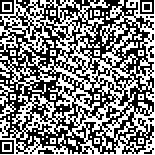| 摘要: |
| [摘要] 目的 探讨肌骨超声检查结果与膝骨关节炎(KOA)中医证型的关联性。方法 选择2019-01~2020-01于广西中医药大学第一附属医院仙葫院区就诊的KOA患者100例(128膝),根据中医辨证论治原理将其分为风寒湿痹证组(17例,24膝)、湿热蕴结证组(30例,34膝)、肝肾亏虚证组(34例,40膝)和气滞血瘀证组(19例,30膝)。应用肌骨超声技术探测膝关节滑膜厚度、滑膜血流、骨赘、关节软骨及软骨下骨质破坏、关节积液、腘窝囊肿等情况,比较四组患者肌骨超声的检查结果。结果 湿热蕴结证组的滑膜增厚阳性率和滑膜血流阳性率均显著高于风寒湿痹证组、气滞血瘀证组和肝肾亏虚证组(P<0.05)。肝肾亏虚证组的软骨及软骨下骨质破坏阳性率显著高于风寒湿痹证组、气滞血瘀证组和湿热蕴结证组(P<0.05)。湿热蕴结证组和气滞血瘀证组的关节积液阳性率均显著高于风寒湿痹证组和肝肾亏虚证组(P<0.05)。气滞血瘀证组的腘窝囊肿阳性率显著高于风寒湿痹证组和肝肾亏虚证组(P<0.05)。四组骨赘形成阳性率比较差异无统计学意义(P>0.05)。结论 KOA患者的膝关节肌骨超声结果与中医证型存在关联性,为KOA患者的中医辨证分型提供了客观依据。 |
| 关键词: 膝骨关节炎 肌骨超声 中医证型 |
| DOI:10.3969/j.issn.1674-3806.2021.05.07 |
| 分类号:R 684.3 |
| 基金项目:国家中医药行业科研专项项目(编号:201507001);广西卫健委中医药科技专项项目(编号:GZMZ1206) |
|
| A study on the correlation between the results of musculoskeletal ultrasound and Traditional Chinese Medicine syndrome of knee osteoarthritis |
|
DENG Wei, ZENG Ping, FENG Cheng-qin, et al.
|
|
The Second Department of Orthopedics, Xianhu Branch, the First Affiliated Hospital of Guangxi University of Chinese Medicine, Nanning 530023, China
|
| Abstract: |
| [Abstract] Objective To explore the correlation between the results of musculoskeletal ultrasound and the Traditional Chinese Medicine(TCM) syndrome of knee osteoarthritis(KOA). Methods One hundred KOA patients(128 knees) who were treated in Xianhu Branch, the First Affiliated Hospital of Guangxi University of Chinese Medicine from January 2019 to January 2020 were selected, and were divided into the wind cold dampness group(17 cases, 24 knees), the damp and hot accumulated knot group(30 cases, 34 knees), the deficiency of liver and kidney group(34 cases, 40 knees) and the qi stagnation and blood stasis group(19 cases, 30 knees) according to the principles of Traditional Chinese Medicine(TCM) syndrome differentiation treatment. The knee joint synovial thickness, synovial blood flow, osteophytes, articular cartilage and subchondral bone destruction, joint effusion and popliteal cysts were detected by using musculoskeletal ultrasound technology, and the results of musculoskeletal ultrasound were compared among the four groups. Results The positive rates of synovial thickening and synovial blood flow in the damp and hot accumulated knot group were significantly higher than those in the wind cold dampness group, the qi stagnation and blood stasis group and the deficiency of liver and kidney group(P<0.05).The positive rate of cartilage and subchondral bone destruction in the the deficiency of liver and kidney group was significantly higher than that in the wind cold dampness group, the qi stagnation and blood stasis group, and the damp and hot accumulated knot group(P<0.05). The positive rates of joint effusion in the damp and hot accumulated knot group and the qi stagnation and blood stasis group were significantly higher than those in the wind cold dampness group and the deficiency of liver and kidney group(P<0.05). The positive rate of popliteal cysts in the qi stagnation and blood stasis group was significantly higher than that in the wind cold dampness group and the deficiency of liver and kidney group(P<0.05). There was no significant difference in the positive rate of osteophyte formation among the four groups(P>0.05). Conclusion There is a correlation between the results of knee musculoskeletal ultrasound and TCM syndrome types in patients with KOA, which provides an objective basis for TCM syndrome differentiation in patients with KOA. |
| Key words: Knee osteoarthritis(KOA) Musculoskeletal ultrasound Traditional Chinese Medicine(TCM) syndrome |

